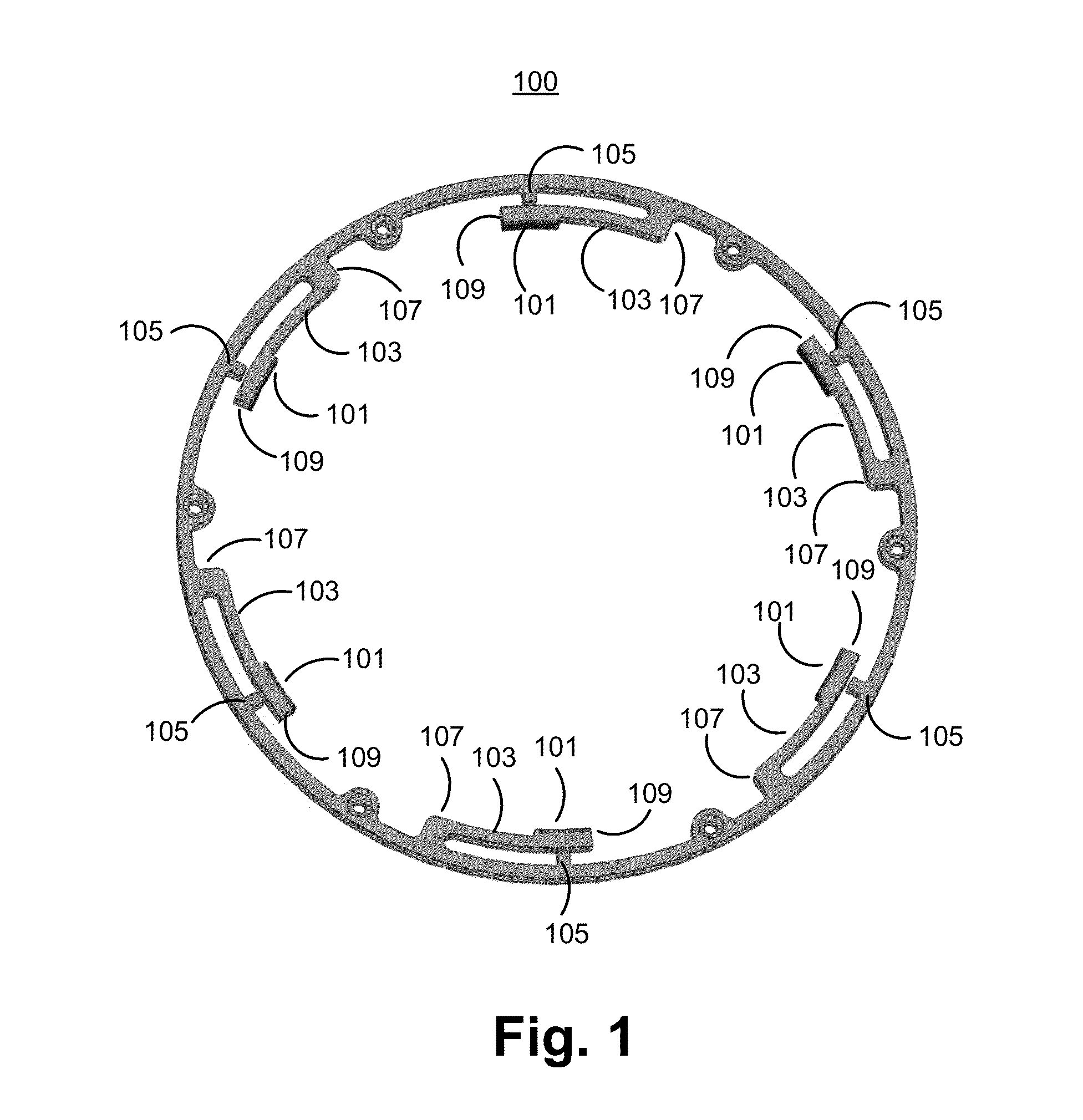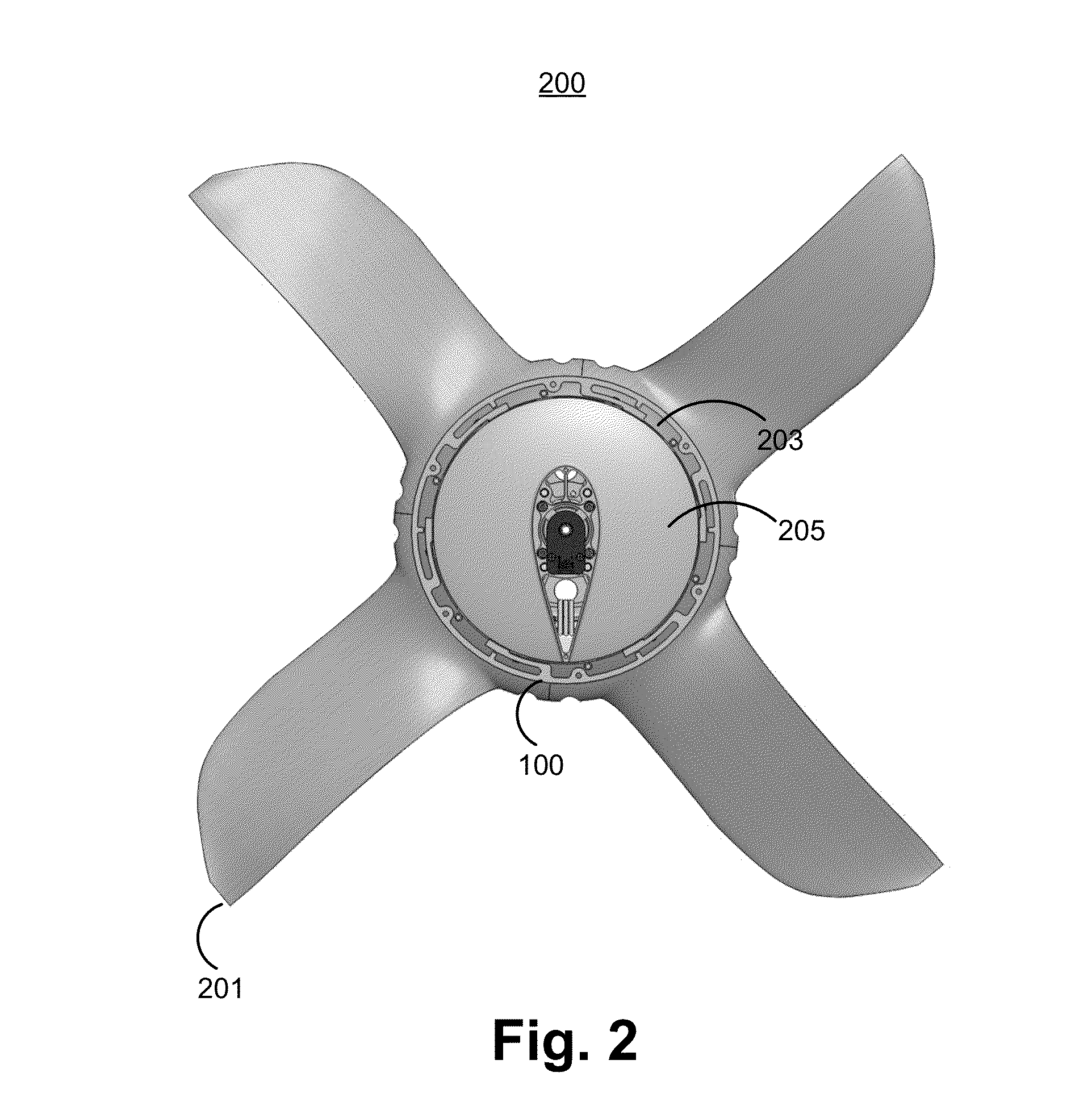Centrifugal De-Clutch
a centrifugal and clutch technology, applied in mechanical actuated clutches, vertical landing/taking-off aircraft, braking systems, etc., can solve problems such as motors generating unwanted hea
- Summary
- Abstract
- Description
- Claims
- Application Information
AI Technical Summary
Benefits of technology
Problems solved by technology
Method used
Image
Examples
Embodiment Construction
[0014]FIG. 1 illustrates a centrifugal de-clutch 100 in accordance with one embodiment. The centrifugal de-clutch 100 is a mechanical mechanism that mechanically prevents a rotor of an aircraft from rotating. In one embodiment, the centrifugal de-clutch is constructed out of metal (e.g., steel, titanium, or aluminum) or composite material (e.g., carbon fiber or Kevlar). Note that in other embodiments other materials may be used to construct the centrifugal de-clutch.
[0015]In one embodiment, the centrifugal de-clutch is a circular ring comprising a plurality of friction pads 101, a plurality of flexures 103, and a plurality of stop tabs 105. The friction pads 101 are composed of brake pad material (asbestos, organic, or semi-metallic formulations) that provide a high coefficient of friction such as 0.1 to 5. Note that other coefficients of friction may be used. The flexures 103 are curved arms each comprising a first end 107 and a second end 109 according to one embodiment. In one em...
PUM
 Login to View More
Login to View More Abstract
Description
Claims
Application Information
 Login to View More
Login to View More - R&D
- Intellectual Property
- Life Sciences
- Materials
- Tech Scout
- Unparalleled Data Quality
- Higher Quality Content
- 60% Fewer Hallucinations
Browse by: Latest US Patents, China's latest patents, Technical Efficacy Thesaurus, Application Domain, Technology Topic, Popular Technical Reports.
© 2025 PatSnap. All rights reserved.Legal|Privacy policy|Modern Slavery Act Transparency Statement|Sitemap|About US| Contact US: help@patsnap.com



